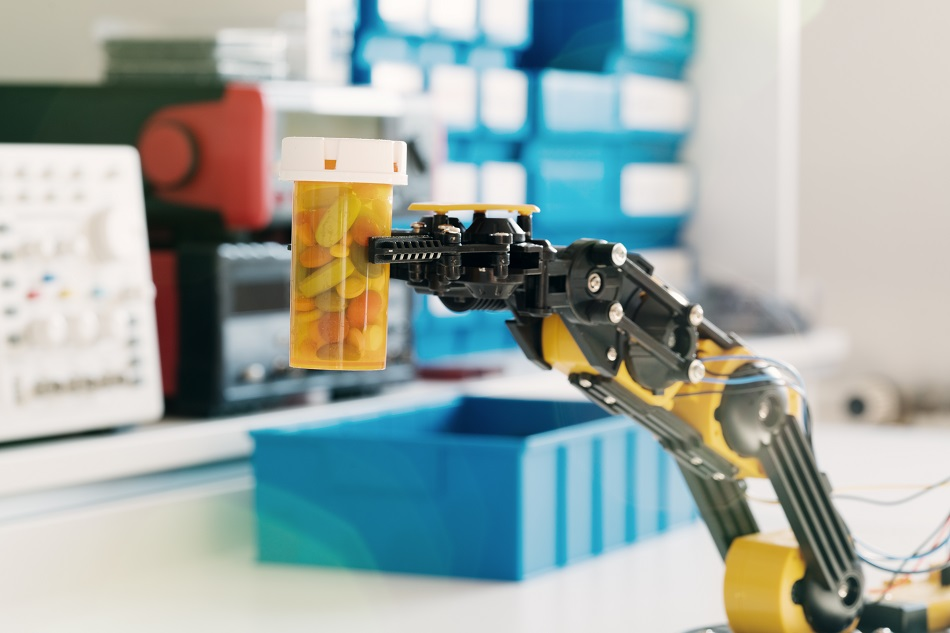Aug 23 2012

Image Credit: science photo/Shutterstock.com
Human–robot interaction is always being fine-tuned by creating more advanced prototype humanoid models. With the rise in elderly care becoming a major factor to challenge future healthcare services, society is starting to become familiar with the idea of creating robots to aid in the care of the elderly.
Robotics in Healthcare
In Japan, there has been a continuous rise in the aging population over the past few decades. With the country being a leader in technological innovation, efforts have been made to introduce advanced humanoid robots that can assist in delivering care for the aging population.
Examples of robots that were introduced in the early 2000s for the purpose of care include ASIMO and Twendy-One – both sophisticated to a degree that allows these systems to adapt to and hold objects or humans and are tactile enough to respond to physical contact with a human. Another example of a classic prototype for lifting elderly patients with limited mobility is Medirobot, a design collaboration between TaipeI Municipal Yan Ming and Pilotfish in Taipei and Munich. The device has been designed to move patients without the requirement of additional equipment. These innovations have inspired researchers to develop medical robots to aid in surgery, diagnosis, and treatment. In 2018, there has been an increase in the utility of robotics in healthcare and caregiving, particularly targeting the inflating elderly population by means of assisting in occupational or functional tasks.
Despite recent developments in robotic healthcare, there is still the obstacle of tackling production costs where the engineering of robot parts is costly. Even if humanoid robots became cheaper to manufacture and operate, not all hospitals and care centers would be able to afford such technology. Nevertheless, robotic companies are continuously striving to introduce consumer-friendly products into the market, emphasizing the long-term value that their robotic products bring.
Advantages of Using Robots in Caregiving
Care-giving services traditionally involve the use of a human care provider to help manage an elderly person’s medication regimen and well-being. Having a robot attempt the preparation of medication for an elderly person in its care will not be possible until such robots have been manipulated, fine-tuned, and made capable of performing tasks that require the utmost attention to detail.
The most relevant advantage of using care-giving robots is the independence and flexibility that a dependent elderly person may feel and experience, which would ultimately resolve the feeling of being burdensome to another human being.
Challenges of Robotics in Elderly Care
Though it may be one achievement in building a robot that is intuitive, tactile, and advanced enough to mirror the actions and commands of a human, it is another challenge to encourage humans to interact with a machine. Dr. Alexander Libin, Scientific Director of Simulation Research from the Medstar Health Research Institute, argues that there is a need for robot technology to better recognize verbal and non-verbal cues. This also demonstrates the need to address the requirement to tune human adaptation to robots and to trust that a mechanical device will be reliable in providing adequate care. These considerations are continuously being addressed in many innovative healthcare robotic technologies that are currently in existence.
An additional challenge in engineering elderly care robots is the diversification that exists in the elderly population – it would not be ideal to create a standard robot system expected to adapt to a population of aging people with varying illnesses and disabilities. Healthcare robotics researchers need to address the issue of enabling robots to adapt to extremely different care conditions. For instance, technology in Japan is drastically different from technologies in developing nations; Japanese engineers favor the creation of robots that are more human-like and interactive as they are keen to develop a machine that, if perceived to be human, will not alienate the one receiving the care.
Industrial robotic systems have become successful in the manufacturing industry; however, this type of environment requires a machine to be precise, accurate, and repetitive. In contrast, assistive robots for elderly care will need to be more flexible when introduced into an unstructured environment and this in itself will impact the design of a caregiving robot. The current market for caregiving robots is already being gradually recognized, and it is feasible that in the future, a large portion of the healthcare sector would also be adopting the use of caregiving and medical robots.
This article was updated on 6th February, 2020.